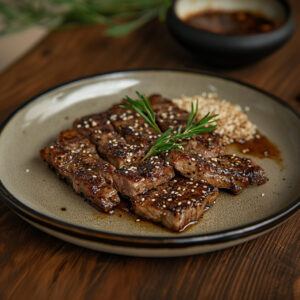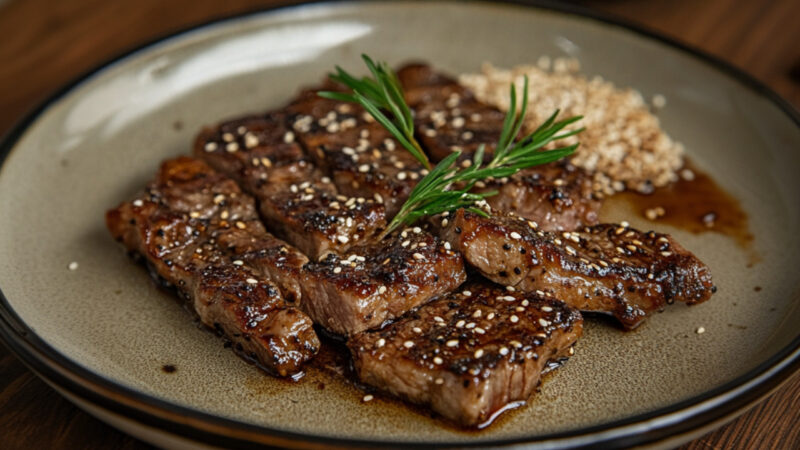Last Updated on January 31, 2025
This is a guest recipe from blogger Cynthia Chen McTernan, who shares more than 80 modern recipes combining her Chinese roots, Southern upbringing, and Korean mother-in-law’s table in her book, A Common Table.
All it takes is the smell of sesame oil for my husband to come wandering into the kitchen.
Even a small amount can fill up the whole room, piercing and immediately recognizable, yet the smell is a round, mellow one, like a warm, booming laugh. “Something smells good,” Andrew will inevitably say, perking up with Pavlovian interest. “When do we eat?”
When something can rouse an appetite so powerfully all on its own, it needs very little else to become a good meal, and gireumjang, a sandy-textured dipping sauce made from nothing more than sesame oil, salt, and black pepper, is proof positive of this.
Nutty and toasty, punched up from the salt and warm from the black pepper, gireumjang is typically served with thin slices of barbecued pork belly—or samgyeopsal—but my mother-in-law also favors serving it with strips of sirloin steak. The latter, smoky from a quick sear in a good cast-iron pan, is my favorite.

Ingredients
- Steak:
- 1 pound ButcherBox ribeye, NY strip or top sirloin steak about 1-inch thick
- 1/4 tsp salt or to taste
- 1/4 tsp black pepper or to taste
- 1 tbsp vegetable oil or other neutral oil
- Gireumjang sauce:
- 1 tbsp salt
- 1 1/2 tsp black pepper
- 3 tbsp sesame oil
Instructions
- Season the steak generously with salt and pepper on both sides. If the steak is cold, let it rest until it comes close to room temperature, 30 minutes to 1 hour.
- In a 10- or 12-inch cast-iron pan or other thick-bottomed skillet, heat a slick of vegetable oil over high until shimmering and very hot. Add the steak and let sizzle energetically for 2 to 3 minutes, until a nice brown crust forms on the bottom side.
- Flip and cook for an additional 1 to 3 minutes, until the steak reaches your desired doneness. An instant-read thermometer is tremendously useful for checking doneness — medium-rare will read between 130°F to 140°F, medium will read 140°F to 150°F, and medium-well 150°F to 155°F. (If you don’t have a thermometer, just use a spatula to press lightly on the center of the steak. At medium-rare, the steak will feel like your cheek, mostly soft but with some structure; at medium, the steak will feel like the fleshy part of your chin, still soft but with more resistance; at medium-well, it will feel like your forehead between your brows, fairly firm.)
- Remove the steak from the heat and let rest for 5 to 10 minutes to let the juices distribute. Meanwhile, make the gireumjang sauce.
- For the sauce, mix together the salt and pepper in a small bowl. Stir in the sesame oil until incorporated. If still cooking the steak, refrigerate until needed. (The sauce will keep for several weeks.)
- 6. Slice the steak and serve with gireumjang drizzled over top or on the side as a dipping sauce. Enjoy!
Notes
Reprinted from A COMMON TABLE: 80 Recipes and Stories From My Shared Cultures. Copyright © 2018 by Cynthia Chen McTernan. Published by Rodale Books, an imprint of Penguin Random House.
Cynthia Chen McTernan is the author of A Common Table: 80 Recipes and Stories from My Shared Cultures: A Cookbook, and the creative force behind the food blog, Two Red Bowls.



